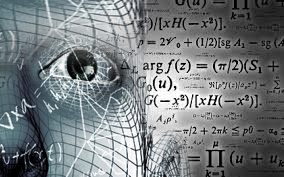Wikipedia-size maths proof too big for humans to check
Source: newscientist.com

If no human can check a proof of a theorem, does it really count as mathematics? That’s the intriguing question raised by the latest computer-assisted proof. It is as large as the entire content of Wikipedia, making it unlikely that will ever be checked by a human being.
"It might be that somehow we have hit statements which are essentially non-human mathematics," says Alexei Lisitsa of the University of Liverpool, UK, who came up with the proof together with colleague Boris Konev.
The proof is a significant step towards solving a long-standing puzzle known as the Erdős discrepancy problem. It was proposed in the 1930s by the Hungarian mathematician Paul Erdős, who offered $500 for its solution.
Imagine a random, infinite sequence of numbers containing nothing but +1s and -1s. Erdos was fascinated by the extent to which such sequences contain internal patterns. One way to measure that is to cut the infinite sequence off at a certain point, and then create finite sub-sequences within that part of the sequence, such as considering only every third number or every fourth.
Adding up the numbers in a sub-sequence gives a figure called the discrepancy, which acts as a measure of the structure of the sub-sequence and in turn the infinite sequence, as compared with a uniform ideal.
Wikipedia-size proof
Erdős thought that for any infinite sequence, it would always be possible to find a finite sub-sequence summing to a number larger than any you choose - but couldn’t prove it.
It is relatively easy to show by hand that any way you arrange 12 pluses and minuses always has a sub-sequence whose sum exceeds 1. That means that anything longer – including any infinite sequence – must also have a discrepancy of 1 or more. But extending this method to showing that higher discrepancies must always exist is tough as the number of possible sub-sequences to test quickly balloons.
Now Konev and Lisitsa have used a computer to move things on. They have shown that an infinite sequence will always have a discrepancy larger than 2. In this case the cut-off was a sequence of length 1161, rather than 12. Establishing this took a computer nearly 6 hours and generated a 13-gigabyte file detailing its working.
The pair compare this to the size of Wikipedia, the text of which is a 10-gigabyte download. It is probably the longest proof ever: it dwarfs another famously huge proof, which involves 15,000 pages of calculations.
It would take years to check the computer’s working – and extending the method to check for yet higher discrepancies might easily produce proofs that are simply too long to be checked by humans. But that raises an interesting philosophical question, says Lisitsa: can a proof really be accepted if no human reads it?
Non-human mathematics
Gil Kalai of the Hebrew University of Jerusalem, Israel, says human checking isn’t necessary for a proof to stand. "I’m not concerned by the fact that no human mathematician can check this, because we can check it with other computer approaches," he says. If a computer program using a different method comes up with the same result, then the proof is likely to be right.
[...]
Read the full article at: newscientist.com
READ: Has mankind created a technical world that the mind cannot master or control?






















